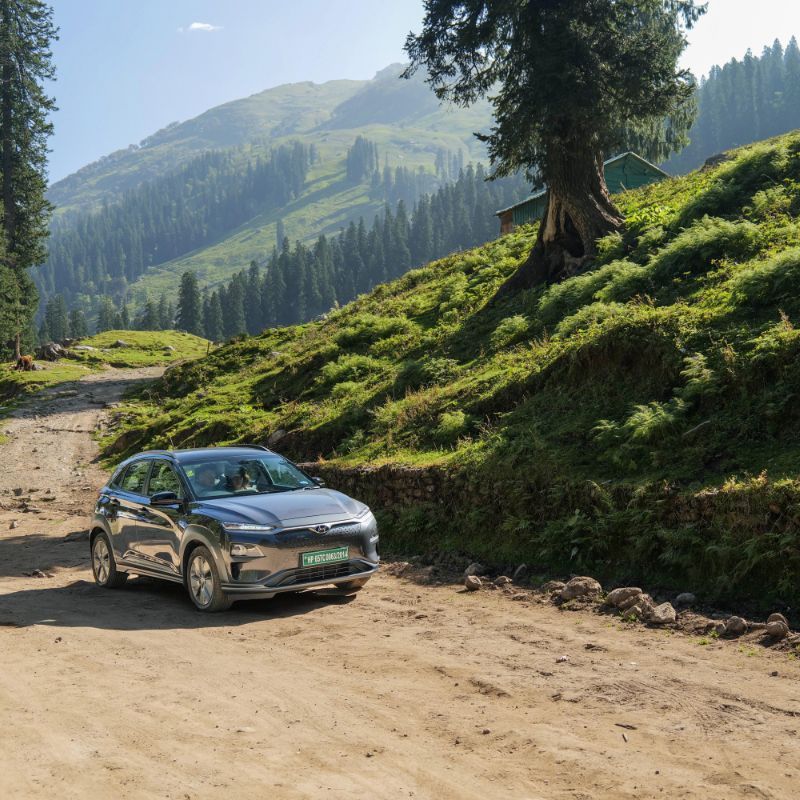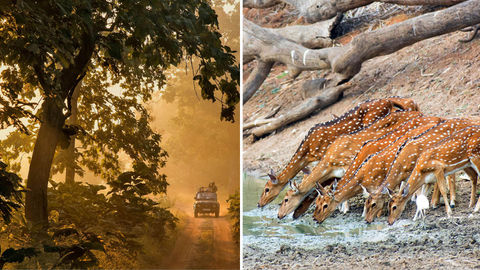
A fascinating conservation campaign revived the Tadoba-Andhari Tiger Reserve, which now teems with big cats and herbivores alike. And at the centre of this success story, stands a father-son duo along with their sustainable jungle lodge. By Shikha Tripathi
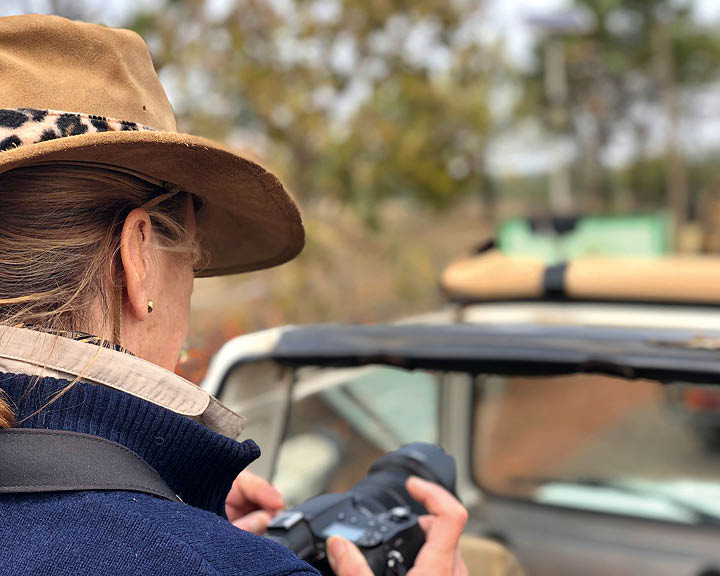
My shocking revelation has left my host puzzled. “How is it possible for someone to leave Tadoba without having spotted a tiger?” Unable to accept the finality of my maiden trip to the park years ago, Aditya Dhanwatay has taken it upon himself to ensure that history does not repeat itself— not under his watch. It’s another story that neither of us is into chasing big cats. We are forest lovers who prefer the whole pie. But the Tadoba-Andhari success story lends itself to the tale of tigers, with Aditya and his father Amrut Dhanwatay leading the way.

SHIKHA TRIPATHI
A three-hour drive from the Nagpur airport takes me to TigerTrails Jungle Lodge. Leaving concrete clusters behind, my driver hits the smooth highway tarmac. As we get closer, the trail dissolves into a dusty pathway lined with mahua and tendu trees. An unassuming wooden signboard announces the property where Reema and Rishab, the backbone of the workforce, welcome me. Their youth belies their knowledge, but a few game drives later, I will be wrapped around the fingers of these skilled naturalists. I opt for a Wilderness Tent over the Oriole Suites, and after being ushered in, soak up the silence of the broad-leaved teak forest that my sit-out overlooks. I’ve been warned about sambar calls that get noisy, but I don’t discount jungle sounds as ‘noise’, for silence, too, is defined by sound. A buzzing bee on a dull afternoon, a haunting coucal call in the solitude of dawn, or the rustle of these enormous leaves rocked by the lullaby of passing wind—all heighten the stillness of the forest. Harnessing this magical silence, though, hasn’t come easy; it’s been an arduous journey of passion and determination for the father-son duo.
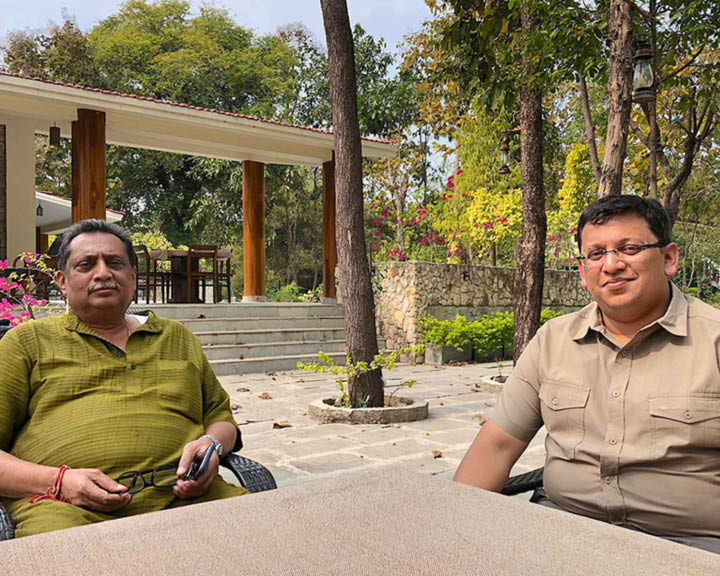
Nearly 65 years ago, 125 square kilometres of Maharashtra was declared as the protected Tadoba National Park, which was merged with the neighbouring Andhari National Park 30 years later along with other forest patches. Together, they formed the Tadoba-Andhari Tiger Reserve in 1995. The local tribal god, Taru, gave River Tadoba its name, and with River Andhari that drains from the north to the south through the forest, the reserve got its name. Spread over nearly 1,725 square kilometres, Tadoba is the state’s largest national park and is divided into the Tadoba north range, Kolsa south range, and the Moharli range wedged between the two. The core comprises open grasslands that are in stark contrast to the dense bamboo buffer known for its tiger sightings. These impermeable patches give way to open meadows dotted with a variety of mammals and birds, made even more enchanting by the Tadoba and Irai lakes.
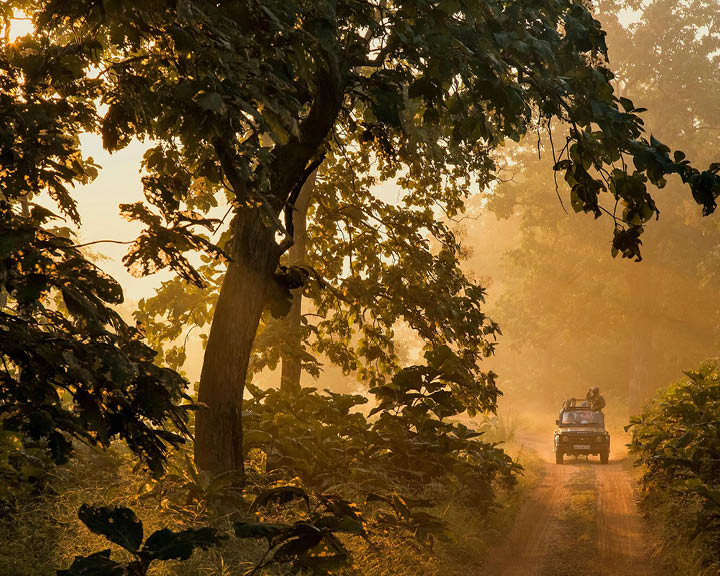
Back in the 1980s, it took local jungle expert and my guide, Lahu Raut, years to spot his first tiger. Today, visitors spot the striped cat on at least one out of three safaris. A local who learned all about nature from scratch, he’s been the right-hand man to the Dhanwatays since the start. Thanks to the pair’s relentless work and strict policy implementation, Tadoba is blessed with tremendous tiger sightings. The reserve, for example, is currently the country’s only one that does not allow mobile phones. While it initially comes as a deep setback to the gadget-heavy existence of many including myself, it is precisely this restriction that allows an immersive interaction with the wilderness.
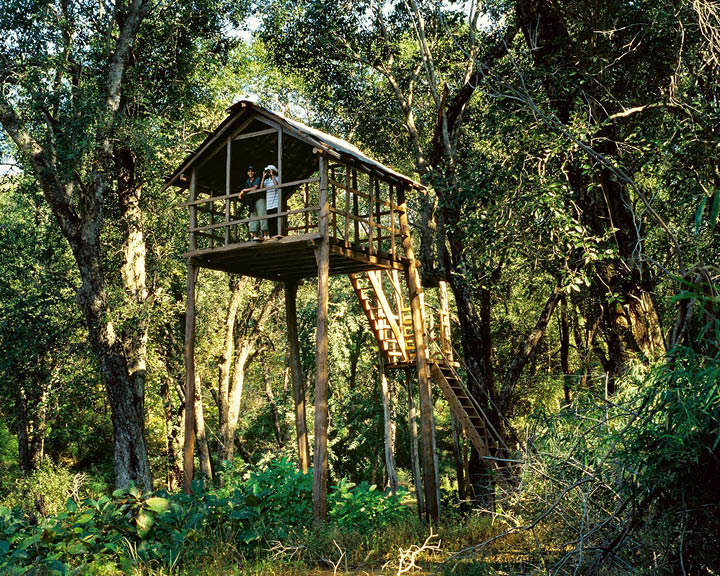
Long before anyone took notice of Tadoba as a potential park, vast tracts of the land were being farmed as agricultural spots by villagers, and the primary forest disappeared over time. When I ask the dynamic but unassuming Aditya to tell me about his family’s role in the forest’s revival, he attributes the rebirth of Tadoba to a unique phenomenon it saw in the early 1980s. Gregarious flowering, a genetically pre-programmed cycle that makes an entire bamboo forest flower together once in 40-60 years, started a secondary forest of teak, tendu, and other trees in the region, and produced plenty of seeds. The new habitat that was born from this miracle also gave rise to the protection of herbivores—nilgai, gaur, and deer started to thrive once again in the refuge of the thicket.
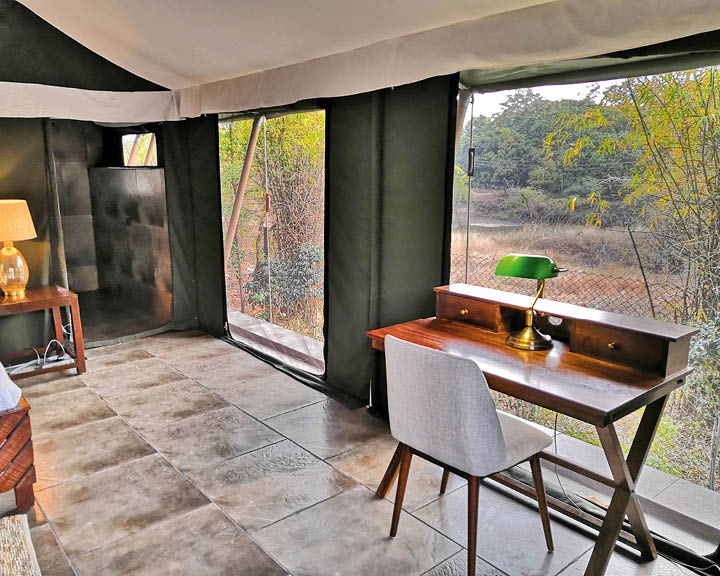
This was also when the Dhanwatays procured two acres of land on the fringes of the park and built a ‘bamboo shack’ with a machan, to be able to spend more time in the wilderness they loved. Living here taught them about the forest like no short trip before, and the first thing they worked on was restoring the water-table levels in the area. This had to be done by removing the sand that was making the water run off instead of percolating down, and which Aditya helped the villagers sell. “They got income, and I got friends,” he grins. Today, the tables have reached a saturation point, and wells that had been perennially dry now have nine to 12 metres of water at all times.
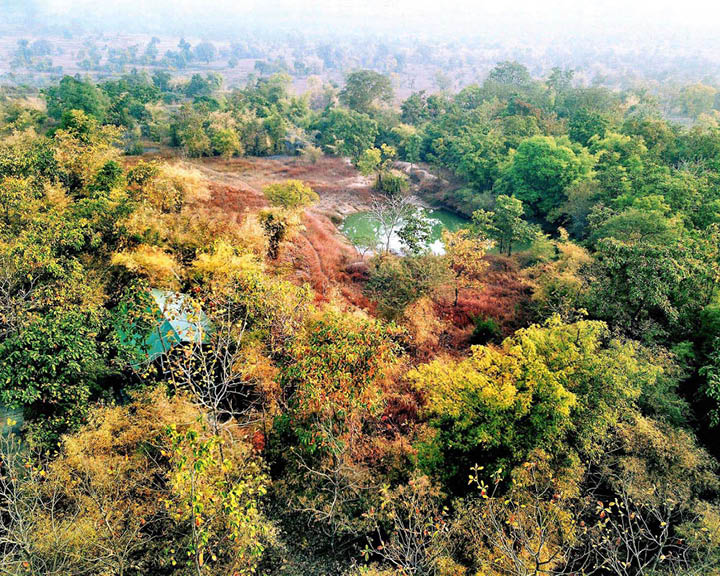
The ecological development of the area was always the main concern, but an even bigger priority was to do it in a sustainable manner. This is why the Dhanwatays incorporated locals in their conservation programmes, taking in technical inputs from experts when needed. Over the years, they acquired nearly 30 acres of land, worked with locals in landscape restoration to create three types of habitats, turned barren stretches into forest, and educated locals on poaching—small-game poaching was the next big challenge after water harvesting. All of these were linked to economic incentives in a way that after nearly 30 years, villagers now consider the land and forest as the sources of their being and happiness.
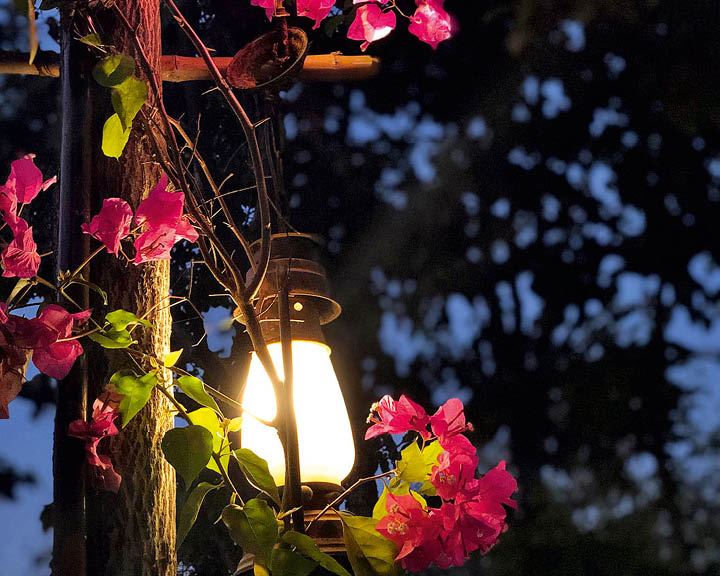
All along, the scattered predators that were earlier roaming vast tracts of forest for prey reduced their circle of search, and with the rise in herbivore population, the numbers for both started to climb year on year. The Dhanwatays joined hands with the forest department to also formulate strict tourism policies, and to initiate the relocation of villages present in the park. A widespread anti-poaching patrol, stringent tourism policies, and incorporation of communities into the fold of conservation have been as vital to the success story of Tadoba as its quality as a forest. All these factors have ultimately contributed to tigers moving around freely in a wider area and mating with multiple tigresses, resulting in a thriving population. Parallel to this was the slow conversion of their own land to forest, and ultimately shaping up TigerTrails in 1986. This was long before the times of tiger tourism, simply created by the Dhanwatays to share their world with equally enthusiastic nature lovers. The built-up part is just two of the final 30 acres, and the land around it is exclusively for the wild denizens, guests being privy to its happenings only via camera traps. From agro-planting to flooding the nurseries, and creating marshlands to attract specific wildlife such as crocodiles, TigerTrails continues to be an ongoing experiment in conservation.
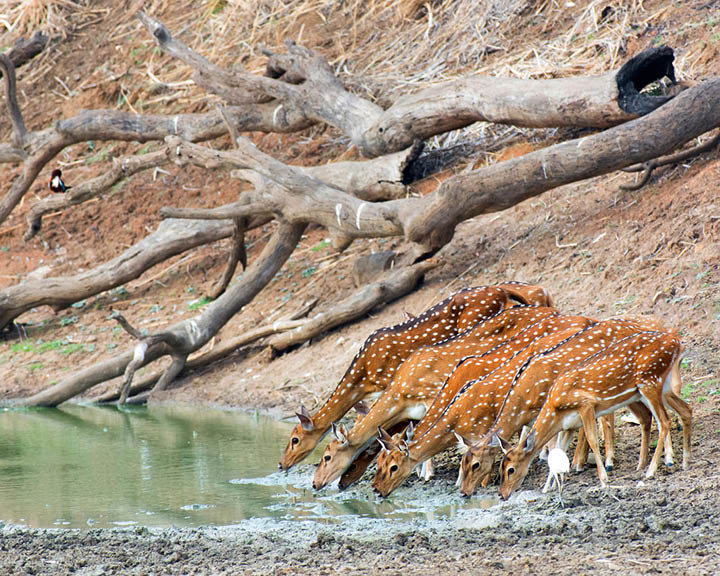
Moments before the end of my final safari, I have the fortune of seeing three cubs at play. The young adults are far enough to feel secure, and close enough to satiate our mutual curiosity. I laugh at the thought of Aditya actually arranging for them to show up. After 40 minutes, blowing a trail of fine red dust behind us, our jeep exits the park. I look forward to a hot shower and the comforts of my plush tent, the simple yet delicious meal we will have in the evening, and flaunting my sighting news at the dinner table. But when I get back, all I want to do is stop and say hello to Sparky, the ‘in-house’ crocodile that lazes in the marshes near the entrance, and climb up the watchtower, and consult Reema to identify the butterfly photos I have shot on Rishab’s camera. All I want to do is go on another jaunt with her and listen to her talk about dragonflies. All I really want to do is sit under this star-studded night on a slight patch of Central India, and marvel at the unique bond of man and nature and all that it can birth.
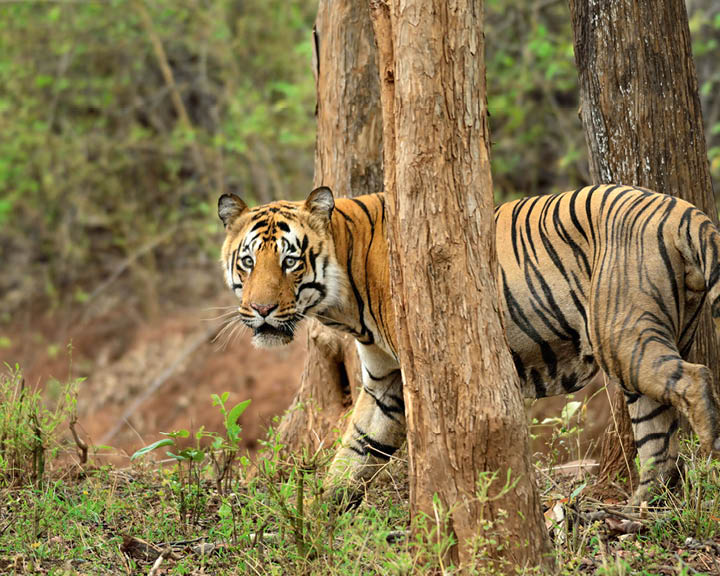
GETTING THERE
Nagpur is the closest airport and railhead. Tadoba-Andhari Tiger Reserve is 150 kilometres away.
STAY
Accommodation at TigerTrails Jungle Lodge starts at INR 19,000 per night with meals;
BEST SEASON
Tadoba is open from October 15 to June 30, with certain zones open in the monsoon. The park only allows 45 jeeps per day, so book safaris well ahead.
Related: India Is Gearing Up To Build Its First Snow Leopard Conservation Centre Here


